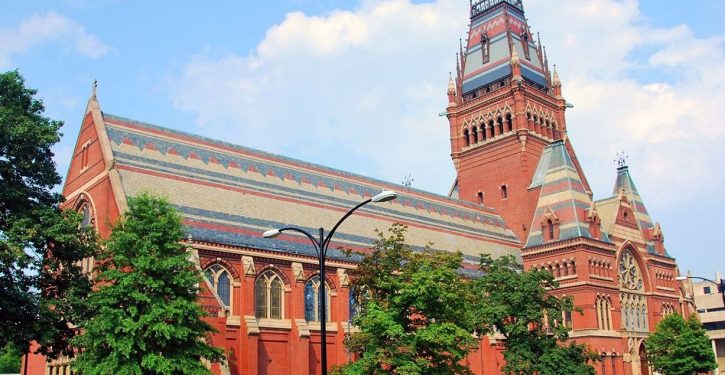
A number of universities recently ended legacy admissions (preferential treatment of relatives of alumni). This occurred following the Supreme Court’s June 29 decision curbing affirmative action in college admissions. Progressives responded to that decision by denouncing legacy admissions, which they argued were a form of affirmative action for wealthy white people. On July 3, progressive black and Hispanic groups filed a civil-rights complaint against Harvard over legacy admissions. According to their complaint, legacy preferences “systematically disadvantage students of color, including Black, Latinx, and Asian Americans” in violation of an Education Department “disparate impact” regulation.
Virginia Tech is the latest university to end legacy preferences, stating on July 28 that doing so will “improve the admissions process to benefit all students.”
Wesleyan University in Connecticut announced it was getting rid of legacy admissions on July 19, making it the first selective private college to do so following the affirmative action ban, according to Inside Higher Ed.
“If we’re doing all these other things to increase diversity, especially in light of the court decision, and we still said, ‘Yes, we can give alumni a preference,’ that would make us hypocrites,” said Wesleyan President Michael Roth. “If I thought I couldn’t raise money because of this, I would have to find a different line of work, because this is the right thing to do. But I believe I can raise a lot of money from Wesleyan alums who are genuinely pleased to support an institution that’s aligned with their values.”
Two weeks ago, the University of Minnesota ended the use of legacy preferences in admissions. It “updated their policy to no longer consider race, ethnicity, legacy, or employment at the university as a factor of admission,” CBS News reported July 18.
Occidental College, which Barack Obama attended, ended the practice on July 26.
As noted earlier, black and Hispanic groups have filed a complaint against “legacy admissions” at Harvard University, challenging its practice of considering family ties to donors or alumni when deciding whether to admit students. They argue that legacy preferences have a racially disparate impact against non-white applicants, because white applicants are more likely to be descended from Harvard alumni than non-white applicants.
Racially disparate impact does not violate Title VI of the Civil Rights Act, which only bans “intentional discrimination” based on race, according to the Supreme Court, not “disparate impact.” But the Education Department’s Office for Civil Rights says disparate impact can violate an Education Department regulation designed to implement Title VI (34 CFR § 100.3(b)(2)). Under that regulation, the Office for Civil Rights says that a colorblind policy can be found racially discriminatory even absent any racist intent by a school, if it excludes significantly more minorities than whites, and is not “necessary to meet an important educational goal,” or if “there is a comparably effective alternative policy that would meet the schools’ stated educational goal with less of a burden of adverse impact on the disproportionately affected racial group.” Many people think legacy preferences are not necessary to meet an important educational goal.
This disparate-impact regulation may be invalid, as the Supreme Court hinted in its decision in Alexander v. Sandoval, 532 U.S. 275, 286 n.6 (2001). The Supreme Court ruled in that case that Title VI only bans “intentional discrimination,” not disparate impact, and it called the government’s defense of federal Title VI disparate regulations “strange” in footnote 6 of its ruling. As the Supreme Court explained, “We cannot help observing, however, how strange it is to say that disparate-impact regulations” are valid applications of Title VI, when Title VI “permits the very behavior that the regulations forbid…..’If, as five Members of the Court concluded in Bakke, the purpose of Title VI is to proscribe only purposeful discrimination … , regulations that would proscribe conduct by the recipient having only a discriminatory effect … do not simply “further” the purpose of Title VI; they go well beyond that purpose.’”
Ironically, getting rid of legacy preferences may not do a huge amount for blacks, since blacks have been attending Harvard since 1847, and have attended Harvard in significant numbers for over 40 years. Legacy preferences probably reduce the admission rates of Hispanic and Asian applicants more than blacks.
Blacks received the largest racial preferences at Harvard under its admissions policy declared illegal by the Supreme Court on June 29. As the Supreme Court noted, “black applicants” were up to “ten times more likely to be admitted to Harvard than Asian applicants” with similar qualifications. But Hispanics also received racial preferences. As the Supreme Court noted, “in the Harvard admissions process,” “a significant percentage ‘of all admitted African American and Hispanic applicants’” are admitted because of their race.
In a complaint filed with the Education Department’s Office for Civil Rights on July 3, Lawyers for Civil Rights (LCR) called legacy admissions “discriminatory” because they give “a leg-up” to predominantly white applicants tied to wealthy donors and alumni.
Some critics of racial preferences have also argued that colleges should get rid of legacy preferences. They have said that failure to get rid of legacy preferences reflects a failure to pursue race-neutral means of seeking a diverse student body that renders any use of race illegal. Even when an institution has a potentially valid reason for using race under Supreme Court precedent — such as remedying its own past discrimination — it cannot use race as a factor, before considering race-neutral alternatives, such as getting rid of red tape that tends to weed out more minorities than whites. Generally, racial classifications are supposed to be used only as a “last resort.” So if legacy preferences weed out more minority applicants than whites, colleges may have to get rid of legacy preferences, before they can even consider using racial preferences. That is part of the “narrow-tailoring” requirement for using race under the “strict scrutiny” that courts apply to racial classifications.
As Justice Gorsuch noted in voting to strike down the race-conscious admissions policies of Harvard and the University of North Carolina in Students for Fair Admissions v. Harvard, “both Harvard and UNC could obtain significant racial diversity without resorting to race-based admissions practices. Many other universities across the country, SFFA points out, have sought to do just that by reducing legacy preferences.”



